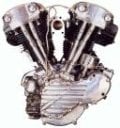Most single processor SGI workstations have the limit of 1GB RAM (except the Fuel with 4GB).
What (64 bit) single processor board do you think would need less modifications (mainly in number of chips and ASICs) in order to support a larger number of RAM GBs? Possible candidates I think would be the Crimson and the Indigo2, but I don't know how complex is their respective memory logic. The O2 cannot run a 64bit OS, so it doesn't count, just like the Indy.
And now... do you think IRIX would be able to use 8GB RAM on a Crimson or Indigo2 if you had such a modified board?
What (64 bit) single processor board do you think would need less modifications (mainly in number of chips and ASICs) in order to support a larger number of RAM GBs? Possible candidates I think would be the Crimson and the Indigo2, but I don't know how complex is their respective memory logic. The O2 cannot run a 64bit OS, so it doesn't count, just like the Indy.
And now... do you think IRIX would be able to use 8GB RAM on a Crimson or Indigo2 if you had such a modified board?



















 (single-CM)
(single-CM)


 and there you are, only at the doors of the endless irix univerese. ..
and there you are, only at the doors of the endless irix univerese. ..